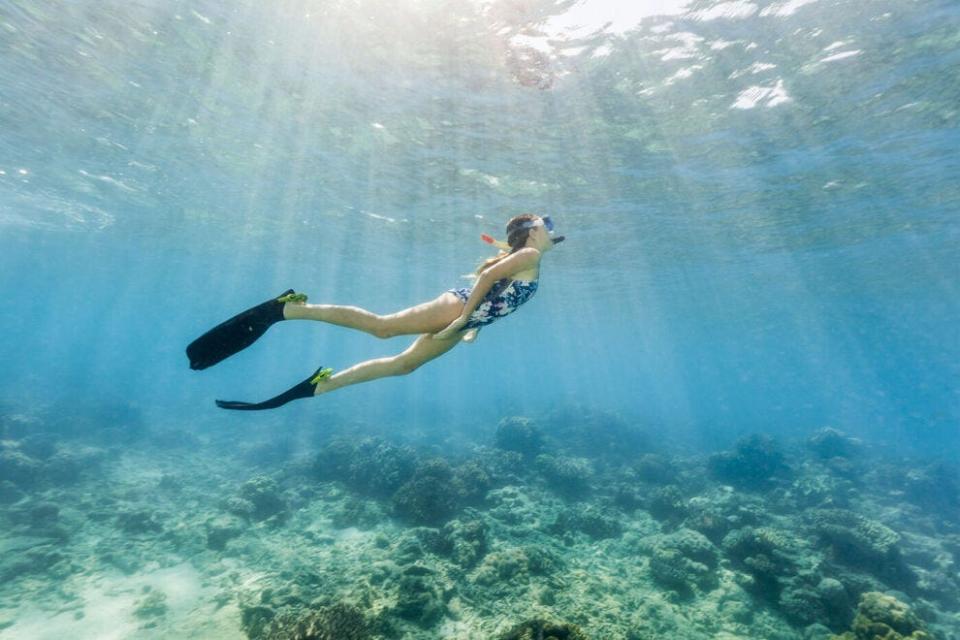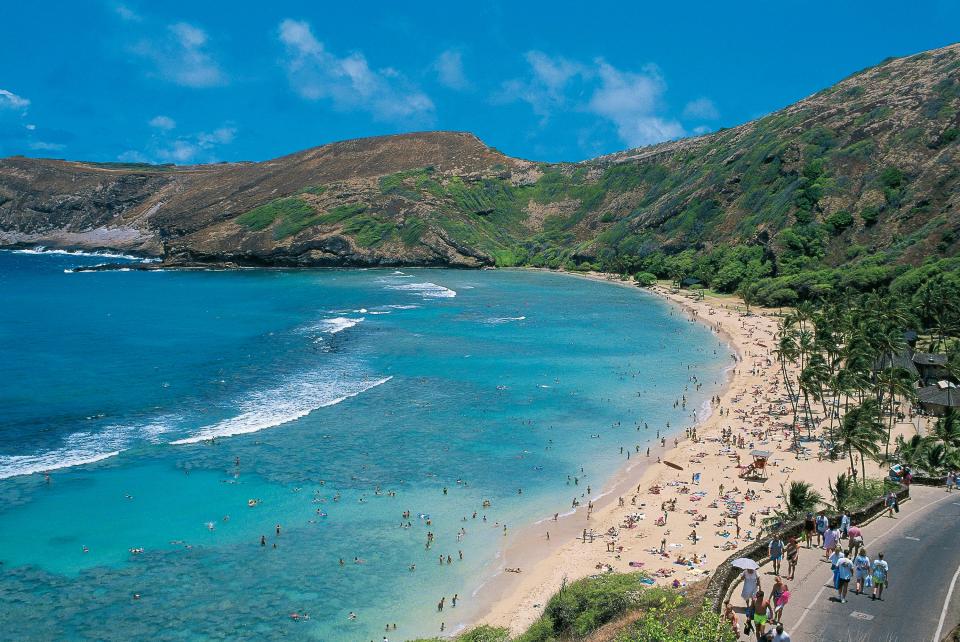They said her husband drowned snorkeling, but she saw him walk to shore. What happened?
A Michigan woman and her family are suing a Maui resort, the Hawaiian Tourism Authority, and the Hawaii Visitors and Convention Bureau after her husband died while snorkeling. She doesn’t believe it was a drowning.
Patricia and Ray Johnson, along with four friends, arrived at the Fairmont Kea Lani on Maui on the evening of Feb. 23, 2022, with plans to visit multiple islands over several weeks. This was the couple’s sixth time in Hawaii, and they had snorkeled the Hawaiian waters many times in the past, Patricia told USA TODAY.
On the morning of Feb. 25, some of the travelers, including Ray, went snorkeling around Wailea Beach, which fronts the resort, while Patricia opted to walk a trail that overlooks the beach. “I looked out, and I saw my husband and my friends or people out there,” she told USA TODAY. “I’m waving at him, and it hits me.” Patricia saw what looked like other snorkelers helping Ray.
She hurried down to the beach, but “things deteriorated quickly.” At first, Ray had his head above water and was returning to the beach, but then the 64-year-old fell onto his back with his head “snapped back at one point” and had to be pulled in. “I knew he was gone,” she said. 9-1-1 was called, but medical professionals failed to resuscitate Ray.
The autopsy report called Ray’s death an accidental drowning, which Patricia doesn’t believe.
“I was watching him come in, how could he be drowning?” According to her friends who were snorkeling with him, Ray was talking and also diving down under the water. At one point, he came up and said, “You gotta help me, I’m having trouble breathing,” and that’s when he decided to head back to shore. “I don’t think when people are drowning in a conditional manner, you’re going to be conversing,” she said.
What to do in Hawaii? Locals weigh in on if these popular spots are worth the hype

By a landslide, the leading cause of death for Hawaii tourists is drowning. And of ocean drownings for residents and visitors, the majority occur when snorkeling. While the ocean is powerful and unpredictable, some advocates, including the Johnsons, are trying to bring attention to a lesser-known medical condition that specifically poses risks to snorkelers and hasn’t gotten much attention over the years: Rapid Onset Pulmonary Edema (ROPE).
The Johnson family believes ROPE is the real cause of Ray’s death, and the lawsuit alleges that Hawaii travel entities have failed to educate the public on ROPE, resulting in “an important public health concern,” according to the complaint filed in the Circuit Court of the First Circuit in the State of Hawaii in February 2024. The case should begin the fact-discovery process this week.
The Hawaiian Tourism Authority, Hawaii Visitors and Convention Bureau and Fairmont Kea Lani declined to comment on the lawsuit.
“I would like to see warnings out there,” Patricia told USA TODAY. “I truly believe my husband would still be here if we’d been warned.”
How is snorkeling dangerous?

Breathing through a snorkel tube is similar to pinching your nose and breathing in through your mouth. The resistance is immediate. ROPE occurs when the negative pressure on the lungs ends up sucking bodily fluids out of the capillaries and into the airways, according to Dr. Raj Dasgupta, a California-based pulmonologist.
“That snorkel resistance to airflow,” he said. “They want to breathe in but they have to breathe through that straw.”
Once fluid is in the lungs, it becomes difficult to breathe and people can experience hypoxia, or a lack of sufficient oxygen. “You slowly become weak then into a loss of consciousness,” Dasgupta said. Underlying health conditions such as heart and lung disease also increase someone’s predisposed risk for ROPE, he said.
If a person begins to feel shortness of breath, they may panic, causing more exertion, which can be life-threatening if they’re already suffering from a lack of oxygen, Dasgupta said.
Drowning by ROPE is “fundamentally different” than typical drowning when people are aspirating water or submerged and often showing signs of distress, the complaint said.
A lack of public awareness

In October 2017, after California woman – and avid swimmer and snorkeler – Nancy Peacock died while snorkeling in calm waters off the coast of Hawaii Island in a full-face mask and no signs of struggle, the Hawaii State Department created the Snorkeling Safety Sub-Committee to “address public concern about snorkel-related drownings.”
In a Snorkeling Safety Study led by the sub-committee, 50 different snorkels were tested, and the experts examined nonfatal and fatal drownings. The interim report released in July 2020 concluded that “ROPE-induced hypoxia is a factor in fatal and nonfatal snorkel drownings.” The study also had a survey conducted at Oahu’s most popular snorkeling spot, Hanauma Bay, but only 36 participants – mostly locals – were interviewed due to the islands being closed to travel during the pandemic.
The high altitude from air travel impacting someone’s lungs may be a contributing factor, but there wasn’t enough evidence in the study to confirm this. Since getting to Hawaii requires at least a five-hour flight, it’s possible that fatigue and stress from flying could play a role in someone’s risk of drowning by ROPE.
The Hawaiian Tourism Authority funded the study to “develop appropriate safety messages.” However, as of April 2024, there have not been any public-facing messages on any of the official Hawaii tourism websites. Information cards have been passed out to most Kauai and Oahu tour boat operators, the subcommittee said. Although the study is preliminary and not robust in terms of participants and even calls for further investigation, it is the only one to explore ROPE in snorkelers so far.
“Why aren’t we in Hawaii letting people know?” said Jay Stuemke, an Oahu-based attorney who filed the complaint on the Johnsons’ behalf. “Pamphlets in rooms, apps, websites, in-room videos, all types of mechanisms to warn people. It’s an easy enough thing to do. We believe had they done that, Ray would still be alive today as well as many other people.”
Snorkeling safety tips
◾ Always snorkel with a buddy, and if you can’t swim, don’t snorkel.
◾ Choose a snorkel with a wide opening and no constrictions in the mouthpiece.
◾ Learn to use the snorkel device before venturing out into water that’s too deep to stand in.
◾ If you feel shortness of breath, stay calm, remove the snorkel and get out of the water immediately, Dasgupta said.
Kathleen Wong is a travel reporter for USA TODAY based in Hawaii. You can reach her at kwong@usatoday.com.
This article originally appeared on USA TODAY: Family sues Hawaii resort after tourist died suddenly snorkeling

 Yahoo News
Yahoo News 
